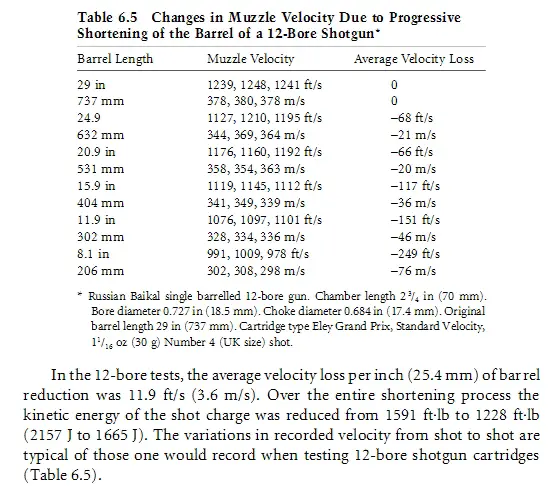


The Mystery of Shotgun Barrel Length
A very common question is what is “the best” barrel length? There is no answer, as we use a system of stock, action, and barrel or barrels so there cannot possibly be a 'correct' barrel length anymore than there could be a 'correct' stock length or a correct action length. Small wonder that it is a confusing topic, as “sighting planes” are discussed relentlessly in ad-copy. Yet, shotguns are not sighted at all and no shotgun has more than one sighting plane including side by sides.
If a guns fits you perfectly, sighting plane is tantamount to nonsense. The same goes with rib width. If you eyes are not on your target, but focused on the rib you've got some problems. If you are using a plain-barreled A-5 or even a “Senza Rib” style of European autoloader, no full-length rib can possibly be used, for there is none. As a generalization, aside from looking stylish, a rib whether solid or ventilated often does help in preventing you from canting the gun as a soft-focus” reference point, but little else. If you feel you need a more precise reference point at the end of your barrel, a smaller bead does that for you. It is the same net effect of having a larger bead that is farther away from your eyes. Wide ribs were infamously tried on the Superposed, the garish 5/8 in. “Broadway rib” that one few people over. Even today, one of the ways to call a sporting gun “sporting” is to pop a wider, but essentially meaningless rib on it. It adds some weight, but does little else.
Barrel length adds weight. That may well be a good thing, or equally may not be. Perhaps there are a few folks longing for the return of the 36 inch barreled “Marlin Goose Gun,” but I'm not one of those people. The notion of shot velocity comes up quite a bit as related to barrel length. Referring to Firearms, the Law, and Forensic Ballistics, Third Edition, by Tom Warlow, we have a pretty good idea. Published velocities are not actual muzzle velocities, they are 3 foot velocities and they do not include the velocity increase from choke constriction.

I've always found the Belgium plain-barreled Browning A-5 Light Twelve, with a 28 inch barrel, to be a well-balanced gun if not exactly light. Yet, a Miroku Light Twelve with a 28 inch barrel is comparatively a nose-heavy pig. There are several reasons for this: the Miroku barrels are heavier, the vent rib adds weight, and the Miroku forearms are heavier as well. The "28 inch" Belgian A-5 normally isn't: the barrels were in metric lengths, the so-called 28 inch barrel is about 27-1/2 inches. If you compare the two side by side, the difference is instantly noticeable. If you've ever shot a 32 inch Ruger Red Label O/U, then you'll be familiar with the type of slothful, ponderously swinging shotgun I'm personally allergic to. Hanging sixty-four inches of excessively heavy pipe off of a shotgun isn't my idea of a good thing. With a substantially lighter barrel set, that's a different story.
If the sighting plane theory made much difference (or any sense), we'd all throw away our O/Us and take the wondrous advantage gifted to us by the new A5 equipped with a 30 inch barrel which should stun the clay-breaking world with its 38 inch sight plane. I'm not anticipating that anytime soon. Like stock length, stock fit, barrel weight, and action type-- barrel length alone doesn't define your personal preference, or what type of shotgun swinging dynamics you prefer. It is just one component of many, although I'll happily admit that a two inch longer barrel does gets you two inches closer to your bird.
Barrel length is little more than personal preference. It should astound you that you might "need" a 30, 32, or 34 inch barrel length. You certainly may want it, prefer it, or may fantasize that there is a "correct" barrel length. Likely the worst notions of barrel length come from clay target shooters themselves that have somehow convinced themselves that barrel length is tantamount and paramount.
The most successful American shotgunner on the international stage is Kim Rhode, who traveled the world with her Perazzi MX12, actually stolen in September, 2008, but thankfully recovered in January, 2009. Kim is the most successful female shooter at the Olympics as the only triple Olympic Champion and is the only woman to have won two Olympic gold medals for Double Trap. Most recently, she won a gold medal in skeet shooting at the 2012 Summer Olympic Games, equaling the world record of 99 out of 100 clays. Kim is a five-time Olympic medal winner including three gold medals and a six-time national champion in double trap. Kim's Perazzi MX12 used 29-1/2 inch barrels for her Double Trap Gold Medals; she switched to 26-1/2 inch barrels for International skeet.
Copyright 2012 by Randy Wakeman. All Rights Reserved.

Custom Search

Custom Search




